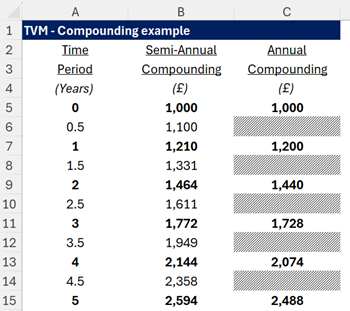
Time Value of Money (TVM) is a core corporate finance concept that refers to the principle that money available now is worth more than the same amount in the future, due to its potential earning capacity today. The TVM concept underlies all calculations and decisions involving time and interest rates in both business and personal finance. Understanding TVM is crucial for corporate finance professionals and investors to properly evaluate cash flows that occur at different points in time.
| Concept | Key Takeaways |
| Time Value of Money (TVM) | – Money available earlier is worth more than the same amount later due to earning capacity. |
– TVM underlies calculations/decisions involving time and interest rates.
– Critical concept in corporate finance and investing.
– Future Value (FV)
– Net Present Value (NPV)
– Internal Rate of Return (IRR)
– Evaluates long-term projects.
– Determines if investments have positive value.
– Use real interest rates and cash flows to account for inflation.
– Continuous compounding used in certain models.
The time value of money concept can be seen more clearly when looking at the formula for future value:
This formula calculates how an amount of money today (PV) can earn interest over time at a specified rate, resulting in a future value (FV) amount. The longer the time period and higher the interest rate, the higher the future value.
For example, $100 invested today at an annual interest rate of 5% for 10 years would result in a future value of $162.89.
This demonstrates that $100 today is worth more than $100 ten years later, because the money today can be invested to start earning interest immediately and be worth more in ten years time.
There are four key calculations used in corporate finance where the TVM concept is utilised:
Understanding the time value of money concept is crucial in corporate finance for several reasons:
In summary, TVM is a fundamental corporate finance concept underlying many analyses and decisions. Managers need a firm grasp of TVM to make sound long-term financial choices and properly value potential investment opportunities.
Inflation, or the tendency for the prices of goods/services to increase over time, impacts the time value of money. As inflation rises, the purchasing power of money decreases.
To account for inflation, calculations involving the TVM concept may use a real interest rate alongside real cash flows. The real rate is the nominal interest rate minus the inflation rate, whilst real cash flows will also exclude any inflationary impact. Being consistent with type of rate used and the cash flows used ensures TVM calculations reflect the real purchasing power of the cash flows over time. This is crucial for obtaining an accurate picture of investment worth and returns.
For example, with 5% inflation and 6% nominal interest rate, a 1% real interest rate can be used in TVM based calculations alongside cash flows that have been adjusted to exclude the impact of inflations. Failing to account for inflation consistently can lead to poor financial modelling and uneconomic investment decisions.
Time value of money has many applications in corporate finance:
Overall, time value of money concepts are commonly applied in corporate financial modelling, valuation, risk management, and long-term decision making.
The Time Value of Money calculations often vary based on the frequency of compounding. Whether interest is compounded annually, semi-annually, quarterly, or monthly, it significantly impacts the final amount. For example, £1,000 invested at an annual interest rate of 20% compounded semi-annually (i.e. 10% every six months) will yield a different value than if it were compounded annually. This is because more frequent compounding periods result in interest being calculated on interest more often.

A more complex extension of the above concept is continuous compounding, where interest is calculated and added to the principal at every possible instant. The formula for continuous compounding is FV = PV * e^(rt), where e is the base of the natural logarithm, r is the annual interest rate, and t is the time in years. This concept is particularly relevant in certain financial models and theoretical scenarios.
Here are some real-world examples that demonstrate the time value of money principle:
In summary, the time value of money is universally applicable across finance. Corporations, governments, financial institutions, and individuals all leverage the power of TVM in modelling, valuation, markets, and decision making. A thorough understanding of this concept is essential for all finance professionals and managers.
To learn more about Compound Annual Growth Rates and other financial metrics, take our Financial Maths Bootcamp course .